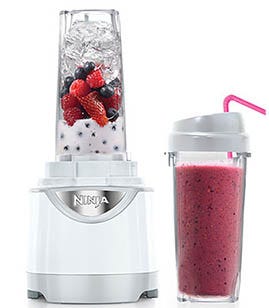Eastman expanding Tritan capacity; sees growth in China
At K 2007 in Düsseldorf, Germany, Eastman introduced Tritan, which was touted as a new-generation copolyester that provided a balance of properties. In 2010, the company opened a dedicated Tritan production plant at its Tennessee headquarters. The latest announcement for Eastman is plans to expand Tritan capacity from 60,000 metric tons to 76,000 metric tons to meet increasing demand for the material. Completion of the project is expected by mid-2014.
August 16, 2013
At K 2007 in Düsseldorf, Germany, Eastman introduced Tritan, which was touted as a new-generation copolyester that provided a balance of properties.
In 2010, the company opened a dedicated Tritan production plant at its Tennessee headquarters. The latest announcement for Eastman is plans to expand Tritan capacity from 60,000 metric tons to 76,000 metric tons to meet increasing demand for the material. Completion of the project is expected by mid-2014.
When it launched, the company first targeted reusable sports water bottles and housewares but Lucian Boldea, VP and general manager of advanced materials-specialty plastics at Eastman, told PlasticsToday that since then, the company has gained traction in other markets such as medical, durable goods and infant care.
 "This investment will allow us to keep a global position, as we continue to evaluate more options and continue to grow," he said.
"This investment will allow us to keep a global position, as we continue to evaluate more options and continue to grow," he said.
When Eastman launched Tritan it was marketed as a "drop-in" replacement for polycarbonate (PC) in products. Part of the goal was to claim some of the market share PC has lost due to safety concerns about its chemical forerunner, bisphenol A (BPA).
Boldea said that it's not just limited to PC, but that Tritan is replacing a wide variety of materials depending on the market. For instance, in housewares it's replacing some glass materials, and in the medical field, instead of clear PP many are turning to Tritan.
"Tritan is able to bring a unique combination of characteristics," he said. "Tritan has redefined toughness, allowing the lasting value of a product that was single-use, and now it lasts longer. "
Growth in China
While Tritan is available globally, Boldea highlighted China as one area of continued growth.
At Chinaplas 2013, Eastman's Business Director for Specialty Plastics of Asia Pacific Region Marie Wilson said that the company closely follows the development demands of global governments, including China, in constructing energy-efficient and environmentally friendly societies. She said consumers are concerned with all products that directly contact food, and they feel especially strong toward plastic products that contain BPA.
"As people's living standards improve, more and more consumers are concerned with quality of life and hope to obtain greener, safer and higher quality consumption experiences," she said.
As such, Eastman sees plenty of opportunity for Tritan in the country.
Tritan lawsuit
Recently, a federal jury ruled in favor of Eastman in its lawsuit against PlastiPure and its sister company CertiChem. In January 2012, Eastman filed legal action against PlastiPure and CertiChem claiming the companies made false or misleading statements regarding EA coming from Eastman's Tritan line of resins and products using these materials.
Boldea said while the jury verdict stands on its own merit, once the post-trial motions and pleadings are complete, they will be able to comment more.
About the Author(s)
You May Also Like


